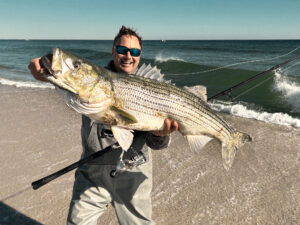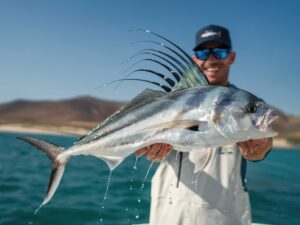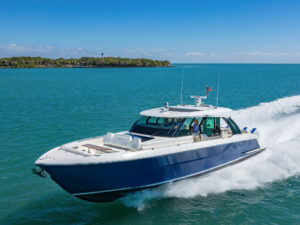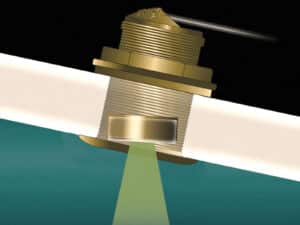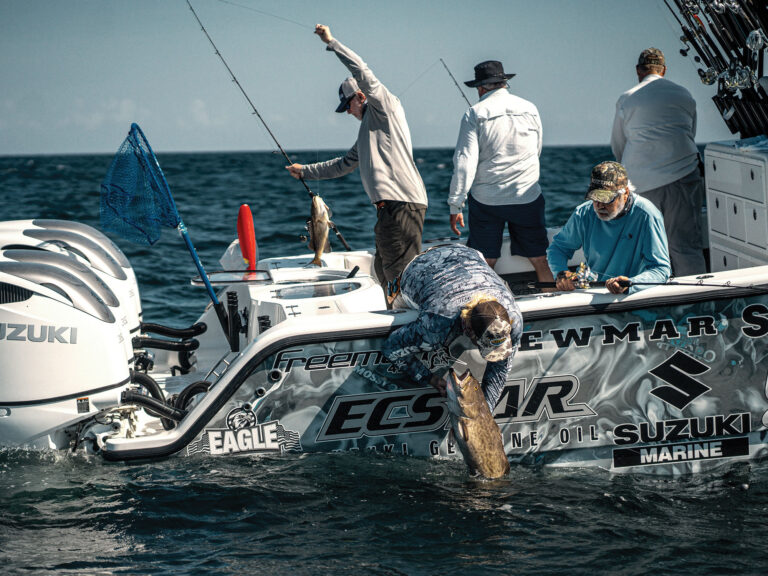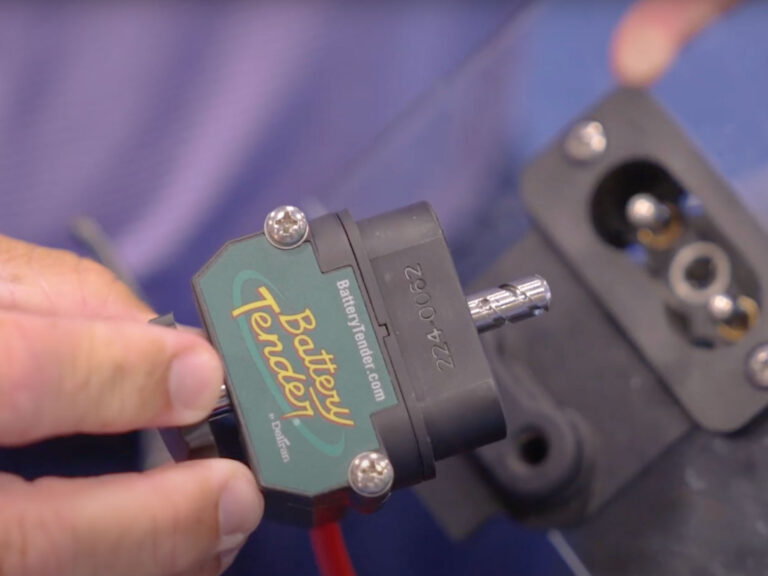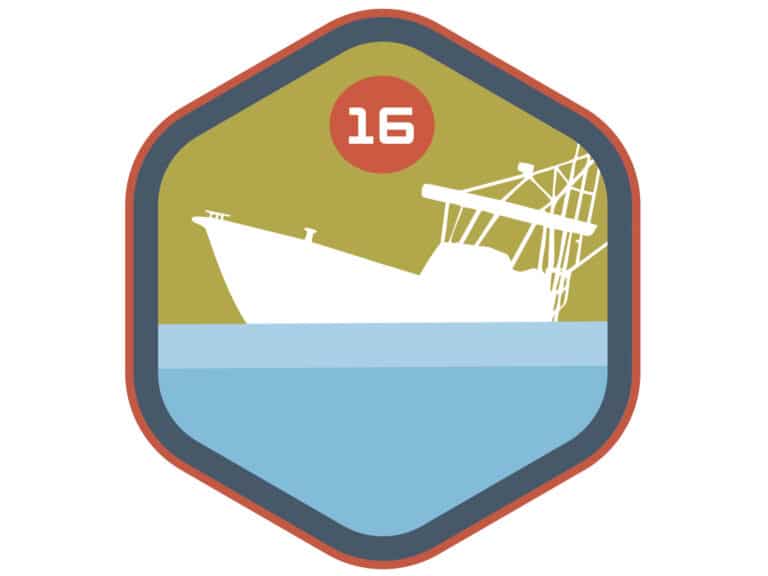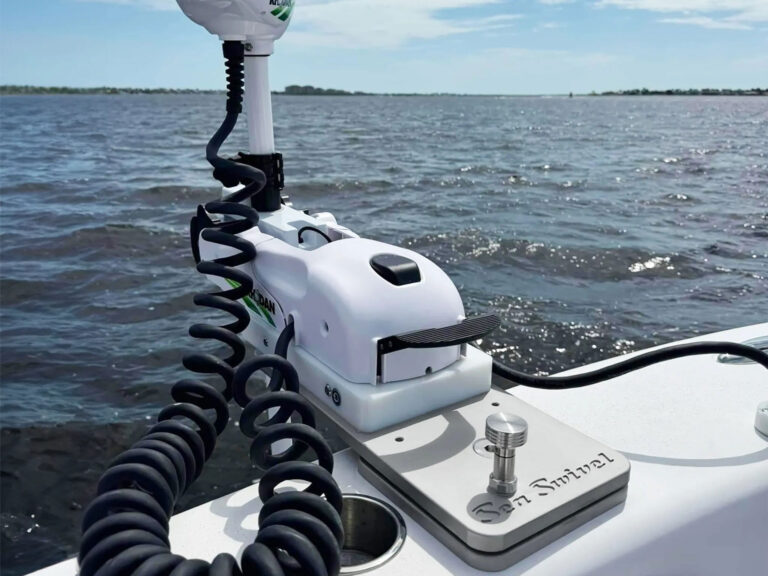
Spend enough time fishing and an odd catch is inevitable. Maybe it’s a strange, mysterious species. Like expecting to catch whiting when dunking cut squid in the South Carolina surf and instead pulling in a freaky-looking Atlantic cuttlefish. At least we know exactly what an Atlantic cuttlefish is. (Well, maybe after you look it up.)
But what about a fish that doesn’t look like a single species, but a combo of two?
Such was the case recently when a fly angler in Florida caught a fish that looked like an almost perfect cross between a red and black drum.
The fish was bronze in color, like a red drum, but lacked a red’s telltale spots on the tail. It also had the black vertical stripes that decorate the flanks of a black drum, although the stripes were quite faded. The fish was not as lean as a typical red drum, but not as bulky as a black drum. The angler released the fish after some photos so a DNA test wasn’t possible. But scientists feel strongly that the fish was, indeed, a combo of a red and black drum.
It was a notable catch because, unlike in freshwater, saltwater hybrids are quite rare.
Freshwater Fish Hybrids Are Common
In fresh water, hybrids occur relatively frequently in the wild, such as when brook trout cross with brown trout to create so-called tiger trout, and when rainbow and cutthroat trout mix to create “cutbows.” There are also saugeyes (walleye crossed with sauger), and tiger muskies (muskellenge crossed with northern pike), among many others.
Often, freshwater hybrids are the product of fish hatcheries. In some cases, fisheries managers are trying to create sportfish that combine appealing traits of both species. Think hybrid stripers, or wipers, a cross between striped bass and white bass. Those fish (which, unlike many hybrids happen to be fertile) grow larger than white bass, but keep the aggressive, surface-busting traits of white bass. Naturally, anglers love them.
In some freshwater cases, hybrids are sterile so they can be stocked to increase recreational fishing opportunities without impacting existing wild fish populations, at least theoretically.
Saltwater Fish Hybrids

While it might be fun to think about the possibilities of crossing certain saltwater species — how about a bonefish, tarpon cross that takes off on a blazing first run and then jumps like crazy? — that kind of thing is likely not happening. (We all wanted to believe a California angler pulled a hybrid of a striped bass and spotted bay bass from the surf near Malibu. But that was an April Fool’s joke.)
There have been hybridization efforts within the aquaculture industry. But Aaron Adams, a senior scientist with the Bonefish & Tarpon Trust said he’s not aware of any hatchery efforts to create saltwater hybrids for sport-fishing purposes.
When an angler catches a hybrid in saltwater, it is almost certainly a product of nature alone. And, because that hybridization is occurring naturally in systems that have evolved over millions of years, that’s a big part of why saltwater hybrids are so rare. Scientists have confirmed some saltwater hybrids, including the scalloped hammerhead (Sphyrna lewini) and Carolina hammerhead (S. gilberti), as well as sheepshead (Archosargus probatocephalus) and sea bream (A. rhomboidalis), plus others covered below. When they do happen it’s typically due to closely related species that have overlapping spawning habitats and timing.
Bonefish Hybrids
For example, there are two distinct bonefish species in Florida and the Caribbean — flats bonefish (Albula vulpes) and bigeye bonefish (Albula garcia). The former is found almost entirely on and near flats, while the latter prefers deeper water. The two species are believed to have separated about 30 million years ago, but they can sometimes hybridize. That’s because when flats bonefish head into deeper water to spawn, they can sometimes overlap with bigeye bonefish.
“Some of those basins are regular habitat for deep water bonefish,” Adams said. “Doing genetics we’re able to occasionally find hybrids. But we’ve never seen a second generation so it’s unlikely that they reproduce.”
The two species are similar enough that the average angler would probably have no idea whether the bonefish they just caught was a flats bonefish, a bigeye bonefish or a hybrid.
Snapper Hybrids
That’s not the case for another hybrid that has been identified in Florida, said Mike Tringali, senior research scientist at Florida Fish and Wildlife Research Institute.
“We’ve had yellowtail snapper hybridizing with lane snapper,” Tringali said. “The lane snapper kind of has this reddish tail, and you put that together with a yellowtail and guess what you get? An orange tail.”
Seatrout Hybrids

Tringali said another Florida hybridization occurs between weakfish and sand sea trout.
Sand sea trout tend to be more of a Gulf species, Tringali said, while weakfish are found in the Atlantic. But there is an area near Jacksonville where they overlap and hybridize.
“Weakfish prefer higher salinity and will be in nearshore waters,” Tringali said. “Sand sea trout will be farther up rivers.”
Test the water salinity in the area where the hybrids hang out and it tends to be an almost perfect average between the levels favored by the parent species.
While hybridization can spark a new species, it is rare even when the hybrids are fertile. It’s complicated genetics, but the basics are that the genes that worked together well in the parent species don’t work as well when they are combined with new genes.
“If hybrids spawn, the more likely it is for bad things to happen in that second generation,” Tringali said. “It’s what we call ‘outbreeding depression’. They’re just too genetically divergent to have a stable genome in later generations.”
Drum Hybrids
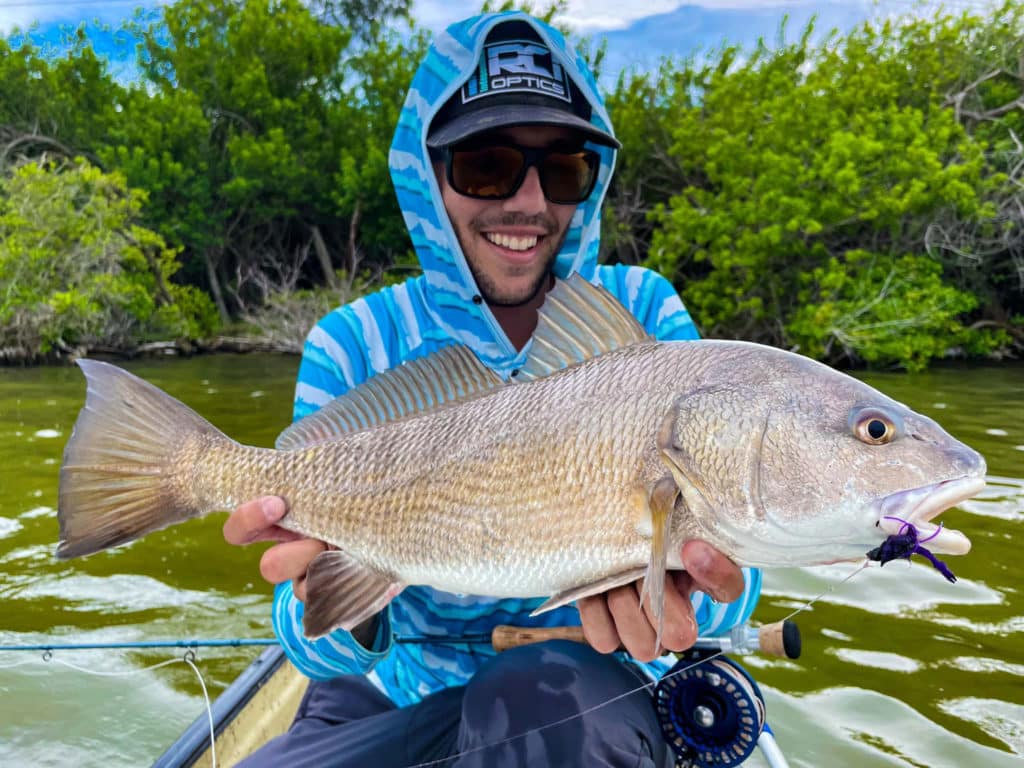
The red drum and black drum hybrid was more unusual than most because the two species, while their habitats can overlap, spawn at different times of the year. But the area where the fish was caught — the Indian River Lagoon — is an unusual situation in itself.
Typically red drum remain in estuaries until they reach sexual maturity at age 4 or 5, at which time the join offshore adults. They tend to spawn in nearshore waters, while black drum spawn closer to shore and in estuaries.
“It’s possible in the Indian River lagoon that red drum may be spawning in there and that some adults may even live there year-round,” Tringali said.
What probably happened is that a red drum that had made the lagoon its permanent home spawned late and connected with an early spawning black drum.
Again, as intriguing as that fish was, anglers fishing the Indian River Lagoon probably shouldn’t get their hopes up. The guide whose angler caught the red/black hybrid told Salt Water Sportsman in a previous story that it’s the first hybrid he’s seen in 25 years of heavily fishing the area.
Even so, while it likely doesn’t portend the spark of a new species, it and other hybrid catches remain an exciting novelty in the world of saltwater fishing.

